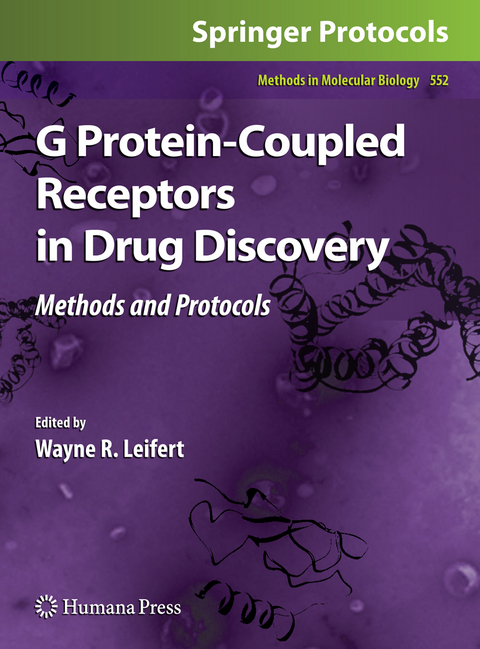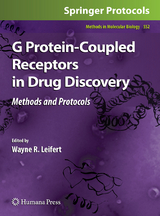G Protein-Coupled Receptors in Drug Discovery
Humana Press Inc. (Verlag)
978-1-60327-316-9 (ISBN)
New Insights into GPCR Function: Implications for HTS.- Screening Technologies for G Protein-Coupled Receptors: From HTS to uHTS.- GPCR Signaling: Understanding the Pathway to Successful Drug Discovery.- An Overview on GPCRs and Drug Discovery: Structure-Based Drug Design and Structural Biology on GPCRs.- Understanding the Ligand–Receptor–G Protein Ternary Complex for GPCR Drug Discovery.- Assay Data Quality Assessment.- Homology Modeling of GPCRs.- GPCR Expression Using Baculovirus-Infected Sf9 Cells.- Radioligand Binding Assays: Application of [125I]Angiotensin II Receptor Binding.- [35S]GTP?S Binding in G Protein-Coupled Receptor Assays.- A Time-Resolved Fluorescent Lanthanide (Eu)-GTP Binding Assay for Chemokine Receptors as Targets in Drug Discovery.- Use of the DiscoveRx Hithunter cAMPII Assay for Direct Measurement of cAMP in Gs and Gi GPCRs.- Use of Aequorin for G protein-Coupled Receptor Hit Identification and Compound Profiling.- BacMam: Versatile Gene Delivery Technology for GPCR Assays.- Yeast Assays for G Protein-Coupled Receptors.- GPCR Microspot Assays on Solid Substrates.- Resonant Waveguide Grating Biosensor for Whole-Cell GPCR Assays.- FRET-Based Measurement of GPCR Conformational Changes.- FLIPR® Assays of Intracellular Calcium in GPCR Drug Discovery.- Use of Fluorescence Indicators in Receptor Ligands.- Application of Fluorescence Resonance Energy Transfer Techniques to Establish Ligand–Receptor Orientation.- Detection of GPCR/?-Arrestin Interactions in Live Cells Using Bioluminescence Resonance Energy Transfer Technology.- Using Reporter Gene Technologies to Detect Changes in cAMP as a Result of GPCR Activation.- A Quantum Dot-Labeled Ligand–Receptor Binding Assay for G Protein-Coupled Receptors Contained in Minimally Purified MembraneNanopatches.- Xenopus Oocyte Electrophysiology in GPCR Drug Discovery.- Immunoprecipitation and Phosphorylation of G Protein-Coupled Receptors.
From the reviews:
“To fully understand the GPCR drug discovery process one should … have wide knowledge of the methods/protocols used in this process. This book serves this exact purpose. … It’s biggest strength is a clear description of every aspect of GPCR drug discovery process, which is easy to understand even for a non-expert in the respective field. … a must-read for everyone involved in GPCR drug discovery and particularly for scientists working in multidisciplinary teams, who need to soundly communicate ideas with experts in other fields.” (Bartosz Trzaskowski, Acta Biochimica Polonica, Vol. 56, December, 2009)
| Reihe/Serie | Methods in Molecular Biology ; 552 |
|---|---|
| Zusatzinfo | XI, 376 p. |
| Verlagsort | Totowa, NJ |
| Sprache | englisch |
| Maße | 193 x 260 mm |
| Themenwelt | Medizin / Pharmazie ► Medizinische Fachgebiete ► Pharmakologie / Pharmakotherapie |
| Medizin / Pharmazie ► Pharmazie | |
| ISBN-10 | 1-60327-316-6 / 1603273166 |
| ISBN-13 | 978-1-60327-316-9 / 9781603273169 |
| Zustand | Neuware |
| Haben Sie eine Frage zum Produkt? |
aus dem Bereich




